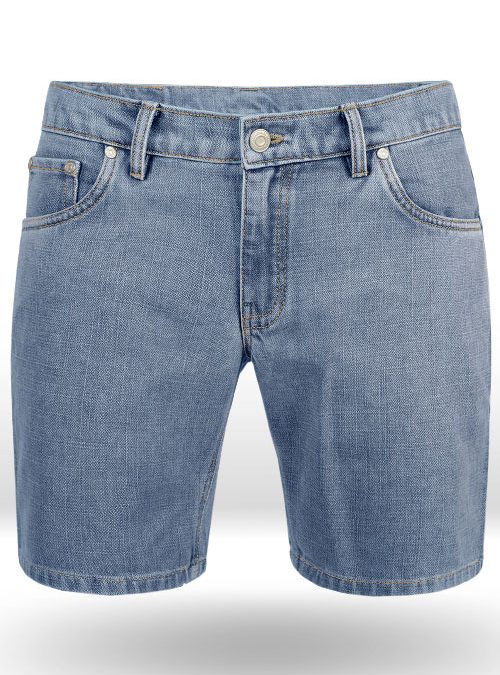
by MakeYourOwnJeans | Denim Shorts |
After buying a new pair of denim shorts, you should take precautions to ensure that they don’t rip, fray or otherwise succumb to damage. Denim shorts are undoubtedly durable. They are made of the same denim material as jeans. Like all garments, though, they can still degrade when neglected. By following these nine tips, you can make your denim shorts last a lifetime. #1) Choose Enzyme-Washed Enzyme-washed denim shorts are better protected against damage than their raw or unwashed counterparts. What are enzyme-washed denim shorts exactly? As the name suggests, they are denim shorts that have been washed with a special type of cellulose enzyme during production. The cellulose enzyme helps to soften the denim material while giving the shorts a naturally aged and broken-in appearance. #2) Wash Less Frequently You don’t have to wash your denim shorts each time you wear them. Washing them less frequently can actually extend their usable life. Each time you wash a pair of denim shorts, you’ll expose them to mechanical stress. Washing machines are aggressive. The more you wash your denim shorts, the greater the risk of damage. By washing them less frequently, your denim shorts will be better protected against premature wear and tear. #3) Get the Right Size Don’t forget to choose denim shorts in the right size. With the right size, you’ll get more use out of them. More importantly, your denim shorts will be less likely to sustain damage. Denim shorts may sustain damage if they are the wrong size. If they are too small in the waist, for instance, you may accidentally stretch them when putting them...
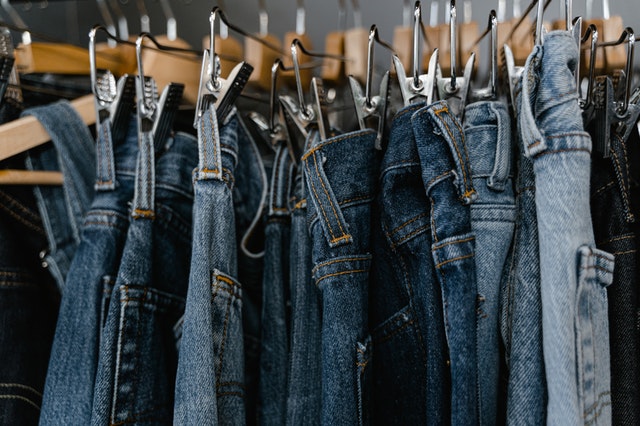
by MakeYourOwnJeans | jeans |
Jeans aren’t made entirely of denim. While you can find them in different cuts, colors and even types of denim, they all feature fasteners. Buttons and rivets, for instance, are used to make jeans. From straight-leg and wide-leg to cropped and high-rise, all jeans have buttons and rivets. As fasteners, they are used to secure the denim fabric in place. For a better understanding of buttons and rivets, including how they differ, keep reading. What Are Buttons? Buttons are fasteners consisting of a circular piece of solid material. They are used in conjunction with a loop on an adjacent piece of fabric. Also known as a buttonhole, the loop is designed to secure the button. You can unfasten buttons by pulling them out of the buttonholes. You can fasten buttons, on the other hand, by sliding them through the buttonholes. Buttons are simply circular, disc-shaped fasteners that are designed for use with buttonholes. There are snaps as well. Snaps look like buttons, but they live up to their namesake by snapping into place. You can push snaps into a corresponding backing. Assuming you use enough force, it will pop into the backing. To unfasten a snap, you can pull it out of the backing. Buttons are always used in conjunction with a buttonhole, whereas snaps are not. Snaps are button-like fasteners that snap into and out of a backing. What Are Rivets? Rivets are permanent fasteners that are used to reinforce areas of a garment. They are commonly found on jeans. Most jeans have over a half-dozen rivets, and some of them have even more rivets. Regardless, rivets have...
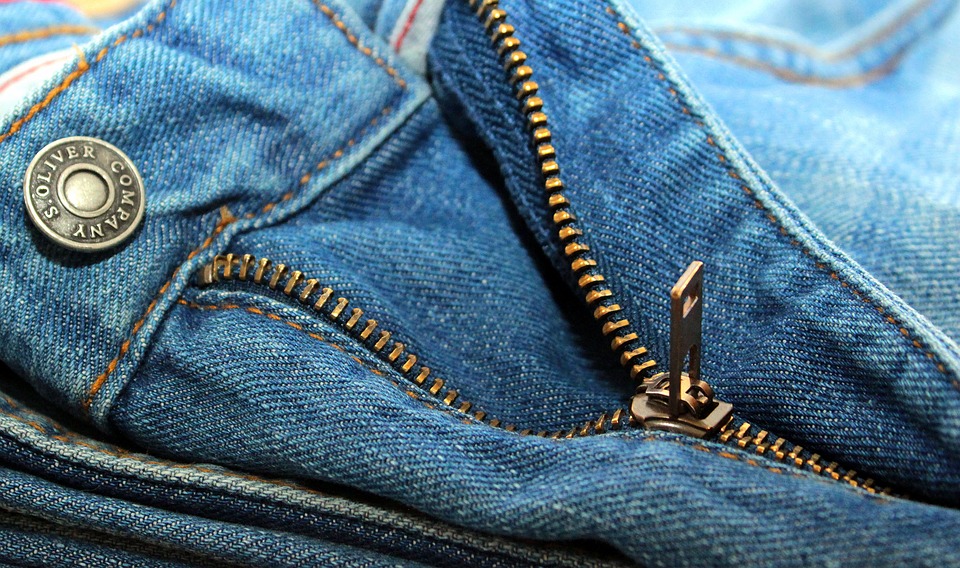
by MakeYourOwnJeans | jeans |
Is the zipper stuck on your favorite pair of jeans? While some jeans have a column of buttons for the fly, others have a zipper. The zipper consists of two rows of teeth and a fastener. You can pull the fastener up and down. Assuming it’s connected to the teeth, it should glide. Zippers, however, can get stuck. It’s disheartening when you discover a stuck zipper on your favorite pair of jeans. Maybe you pulled the jeans out of the clothes dryer, only to realize that the zipper won’t pull up. How do you fix a stuck zipper such as this? ‘Reverse’ the Zipper and Try Again Sometimes all it takes to fix a stuck zipper is reversing it. Assuming you’re unable to pull up the zipper, try pushing it down. Zippers can get stuck in different ways. Normally, though, they’ll only get stuck in a single direction. If you’re unable to push the zipper down, you should be able to pull it up. If you’re unable to pull the zipper up, on the other hand, you should be able to push it down. Reversing the zipper may reset it on the tracks. You can pull the zipper down, after which you can try to pull it back up. Stuck zippers often get caught on the tracks. By reversing it, you may be able to fix it. Just remember to avoid tugging on the zipper. You should push, as well as pull, the zipper using minimal force to minimize the risk of damage. Inspect the Tracks for Fabric If the zipper is still stuck, take a minute to inspect...
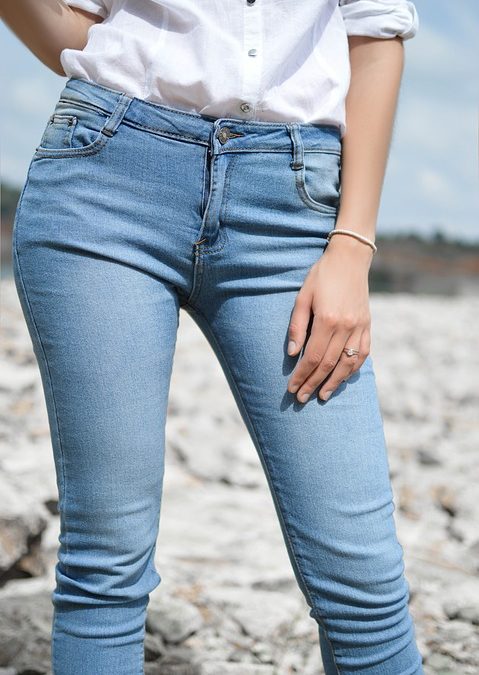
by MakeYourOwnJeans | jeans |
When you buy a pair of new jeans, you may expect them to retain their original size and shape indefinitely. Jeans, however, can stretch out. The more you wear a pair of new jeans, the greater the risk of them stretching out. It’s frustrating when you discover that your jeans are no longer the same size and shape. Even if they are just one size too big, they won’t offer the same flattering appearance when worn. By understanding why new jeans stretch out, though, you can prevent it from happening. Exposure to Heat Exposure to heat can cause new jeans to stretch out. Going back to the basics of physics, heat causes things to expand. When exposed to heat, your jeans will expand, thus stretching out. Common sources of heat to which new jeans may be exposed include water from the washing machine, air from the clothes dryer, an iron and a garment steamer. You can still use these appliances to clean and care for new jeans, but consider turning down the heat on them. Using a lower heat setting will protect your new jeans from stretching out. Leaving the Fly Fastened When Putting on and Taking Off You may accidentally stretch out your new jeans if you leave the fly fastened when putting them on and taking them off. All jeans have a fly. The fly is a vertical band on the front that features a set of buttons or a zipper and buttons. With the fly fastened, the waistline of the jeans will be slimmer. As a result, putting the jeans on or taking them off may...
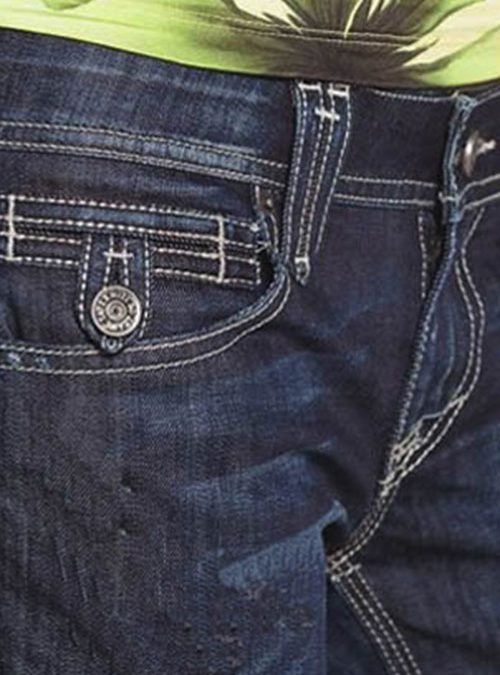
by MakeYourOwnJeans | jeans |
Different jeans have different pocket styles. Regardless of the cut, most jeans have four primary pockets. They have two primary pockets on the front and another two on the back. Some jeans, however, have additional pockets. Furthermore, the way in which these pockets are designed may vary. If you’re going to buy a new pair of jeans, you should check the pocket style. Below are seven amazing pocket styles to consider for jeans. #1) Leather Coin Leather coin is a pocket style that involves the use of a coin pocket made of real leather. It’s available as a customization option here at MakeYourOwn. You can customize any new pair of jeans with the leather coin pocket style. If you look inside of the front pockets of most jeans, you’ll notice they have two smaller pockets. These smaller pockets are coin pockets. As their name suggests, you can store coins inside of them. Leather coin is a pocket style that involves the use of leather coin pockets. The rest of the jeans, as well as the pockets, will be made of denim. The coin pockets in the front pockets, though, will be made of real leather. #2) Flap Coin Another pocket style to consider is flap coin. Like leather coin, flap coin is a type of coin pocket. Flap coin is a pocket style that involves the use of a top flap for the coin pockets. Most coin pockets have an open top. Flap coin pocket, on the other hand, has a closed top. You can pull the “flap” open, after which you can place coins or other small items...
















